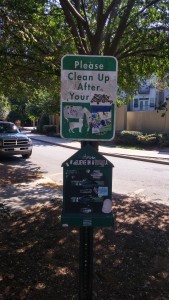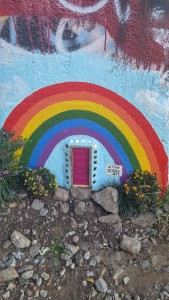October11
The Atlanta Beltline was built to serve a culture, but it has also formed its own in turn. The Beltline and all its areas were originally a way to give old spaces new life, and it certainly has. Connecting many major parks restaurants, markets, and other resources makes the Beltline a place at the service of the public, providing access to many different areas by one direct path. Predominately a trail, the Beltline differs from much urban infrastructure by its focus on walking as the main means of travel, not a car. People now have a way to walk down one street and pick up groceries, let the kids play, walk the dog, get some fresh air, and join in any events happening while they are out. It is literally “one stop shopping,” and to have a place like this within a city is revolutionary enough to define what a city really is or could be. While being on the Beltline, one could almost forget they were in a city, it seems very removed from all the bustle that a city normally entails.
While rather new in its origin, the Beltline already is becoming an area visited by much traffic, and the number of people that come to the Beltline regularly continues to grow. The issue is now becoming one of crowds, at least on the weekends. However, the plan for light transit should be coming to fruition within the next year so moving a greater amount of people along the Beltline will not be an issue for long.
The Beltline provides an atmosphere that can easily enjoyed by everyone, due to the immediate access and diverse things of interest that can keep all entertained. As more people learn about the Beltline, the more people want to be a part of it, and the more the Beltline will expand and the culture will grow as more people come to the Beltline.
October11

I thought this was a great portrayal of how the environment has formed in expectation of people’s needs, or perhaps in response to people being on the Beltline. Many people bring their dogs with them when they walk the Beltline, and so it has become necessary for their to be resources available for when dogs do their business. Amenities such as these help keep the Beltline nice for everyone to use.
October11

When I first saw this, I thought about how interesting it was that so many diverse pictures were on the Atlanta Beltline. Even though this was a photography project, I wondered if there was some larger meaning to it. It seems a lot of the pictures are unrelated, seemingly put together randomly with no overarching theme except that of life. I found some of the pictures from other countries to be very insightful about how people from other countries look and act. Some pictures made me wonder how that photo was even taken, and by what means. For example, pictures of people sleeping made me think it odd that someone would give their consent to have a picture like that taken.
October11

This camera is found under another bridge much less decorated than the one where the tiny door is located. Apparently it had a hand attached to it, like someone was coming out of the rock to take a picture of the people walking by. The hand broke off however, so now it is just a tiny blue camera. You can see on the left side of the photo all the ivy that was growing, there were a lot of tall grasses and overgrowth once the camera was passed, making the camera one of the last pieces of art before the trail turned into one more focused on nature than man-made art.
October11

Along the Eastside Trail there are various “Tiny Doors.” When my friend first pointed this door out to me, I thought it was so cute, and it made me curious as to why it was made. I was told later that they are made for a purpose, not just for art. This one is located on the side of a bridge around a lot of other graffiti and other pieces of art, so it can easily be lost among the other things appeal to one visually.
October4

I thought this picture was so important, literally history in the making. In the center, the one with white hair, is Ryan Gravel, the former Georgia Tech student with the original idea of the Beltline as it is now and what it will be. He accompanied us for part of the tour that my teachers gave about the Beltline (my teachers both being on the right). Many interesting things occurred within that week pertaining to the Beltline and it’s future. Ryan Gravel had actually resigned from the committees associated with the Beltline 3 days before he was supposed to meet us, as he thought the Beltline was not putting as much work in to creating affordable housing for people who lived along the Beltline before the it was ever created. On the left is Angel, a volunteer, activist, and engineer who is very invested in the future of the Beltline. That day he was working on getting the plan for light rail along the Beltline cleared so that construction can move forward, and while he was with us, he got the call that solidified the possibility of light rail along the Eastside Trail.





Recent Comments